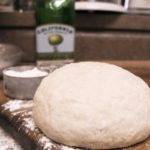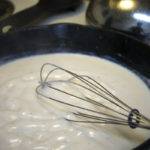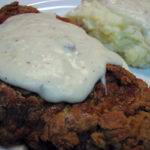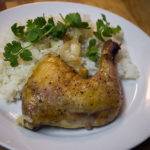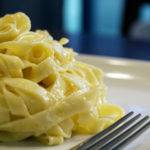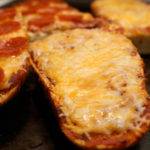In earlier posts, I’ve shown you how to break down a whole beef brisket and a whole pork loin and turn them into a lot of different meals. Today we’re going to take on another big chunk of meat, the picnic ham.
Don’t Let the Name Fool You:
Unfortunately, the name picnic ham is deceiving. A regular ham is cut from the back leg of the pig, then cured, smoked, or otherwise treated. The picnic ham is from the front legs of the swine, and almost always uncured. It would be more appropriate to call this cut a “bone in shoulder” and, sometimes you’ll find it labeled as a picnic shoulder. (Mine was just labeled “Fresh Pork Picnics”. ) This will vary from store to store, so just be on the lookout for the good part, which is…
This stuff is cheap!
The picnic ham isn’t the most popular cut of pork, It’s a tougher cut that does best with long, slow cooking times so the price tends to be pretty low. At the time of this writing, I found a 7.26 pound ham for $1.00 per pound, or just $7.26. That’s a lot of meat for less than 8 bucks!
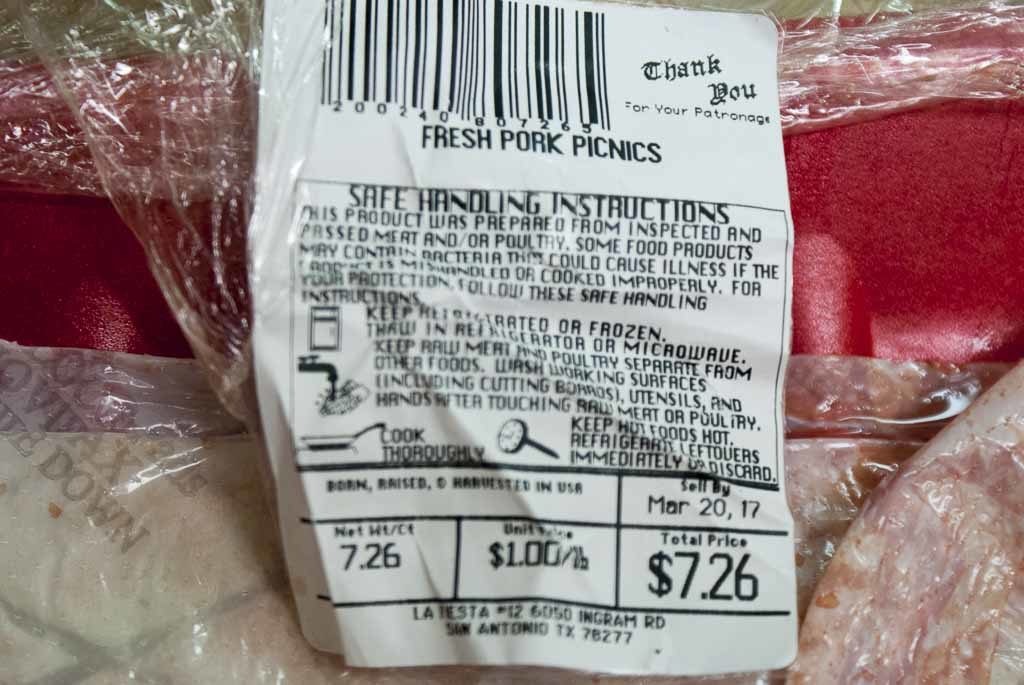
Now, you could just pop this beauty in a slow cooker for some kalua pork or pulled pork sandwiches, but let’s get real here. You’re probably not feeding 8 to 10 people tonight, so we might as well cut this bad boy down and take advantage of that low price.
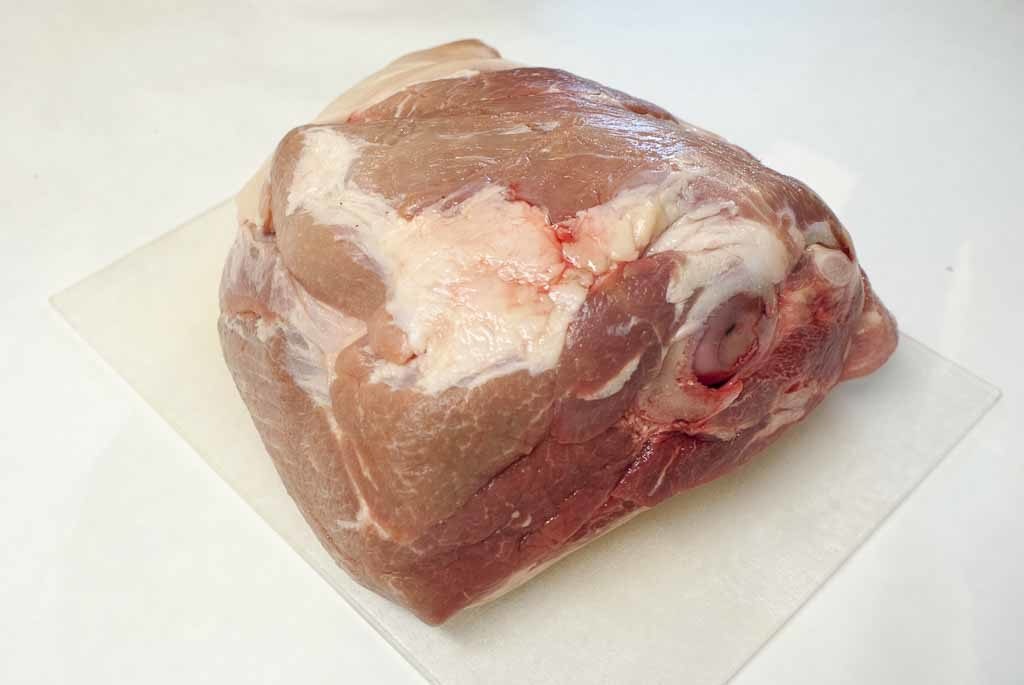
But first, the prerequisite talk on safety and cutting implements…
Preparation:
First, clean your counters well. Get rid of anything you don’t need on your surface and scrub it well. I like to cover mine with freezer paper while working, just so I have less clean up at the end. As long as you’ve got a bleach cleaner to finish up the job with, the paper isn’t necessary. You’ll also need a plastic or Teflon cutting board, so that you don’t dull your knives or scratch your counters.
Next we need to consider knives.

While I love my J.A. Henckels 8-Inch Chef’s Knife (Pictured on right) and use it nearly every day, it’s not really the right knife for this job. A far better choice is an inexpensive carving knife like the one pictured on the left. It has a much more flexible blade that is more forgiving for trimming meat and will make the final product much cleaner.
If you don’t already have one of these, you can get it at most grocers, or through Amazon. in either case, you’ll want a Traditional 8-Inch Slicing/Carver Knife. The shape and flexibility of this style knife will make your task easier.
Let’s Get Butchering Your Picnic Ham:
This is a bone-in piece of pork shoulder, so the first thing we have to do is separate the meat from the bone (or bones). You can see from the diagram below how they lay out.
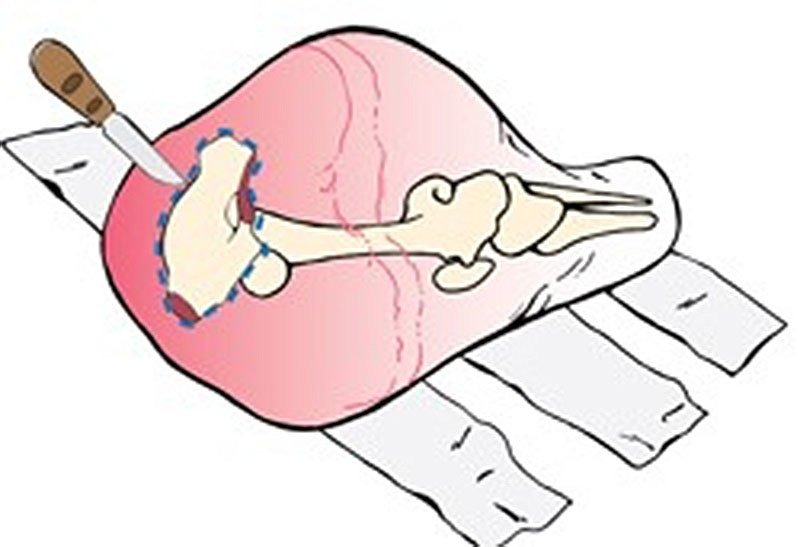
Image credit: Paul P. Graham, Extension Specialist, Food Science and Technology, Virginia Tech; N. G. Marriott, Extension Specialist, Food Science and Technology, Virginia Tech; R. F. Kelly, Retired Professor, Food Science and Technology, Virginia Tech. Original can be found on the Virginia Tech Website.
The first thing we want to deal with is the joint at the end. It’s fiddly and it gets in the way, so just run a knife around it and pop it off.
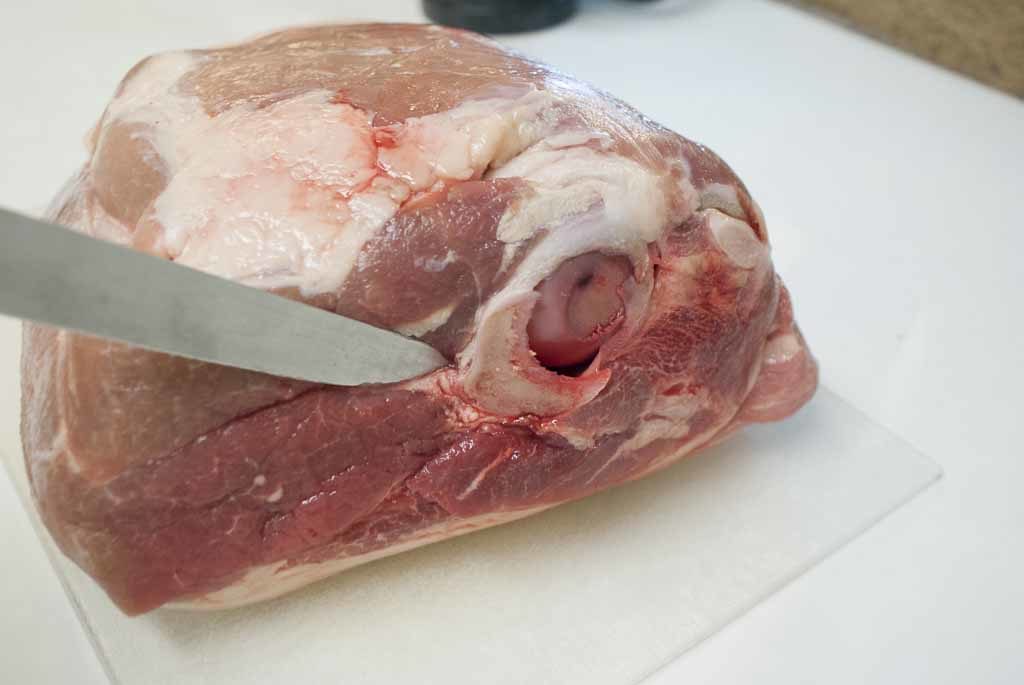
Once that’s done, eyeball where the bone runs through the picnic ham. (In this case my butcher appears to have sliced this before it packaging as a whole pork picnic, so I just followed his lead and sliced there.)
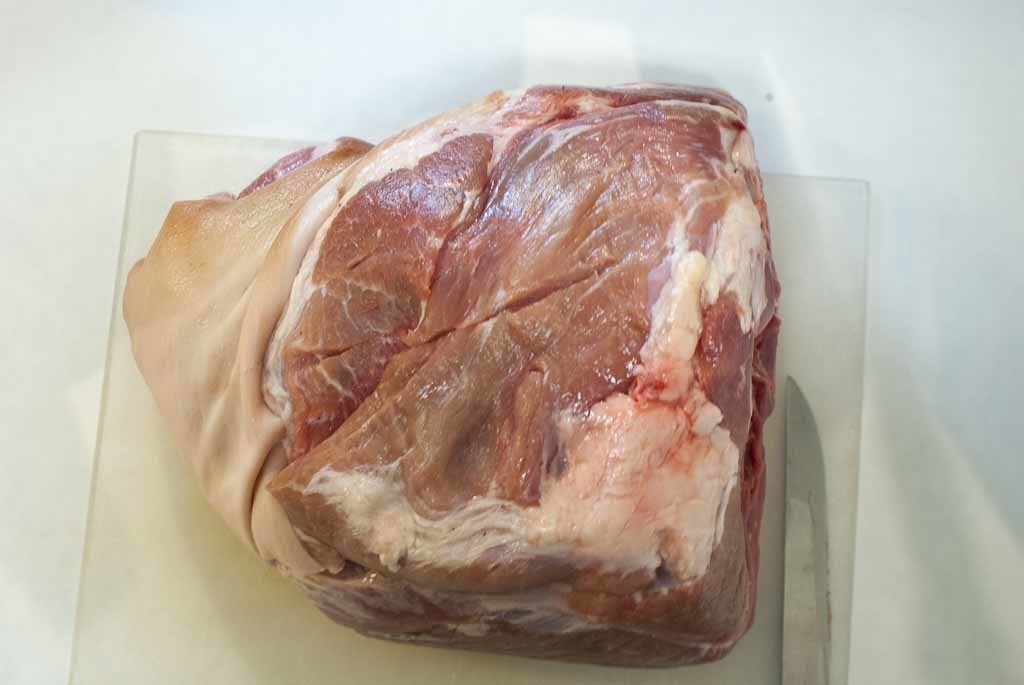
Once you get down to the leg bone, just follow along and fold the meat away from it.
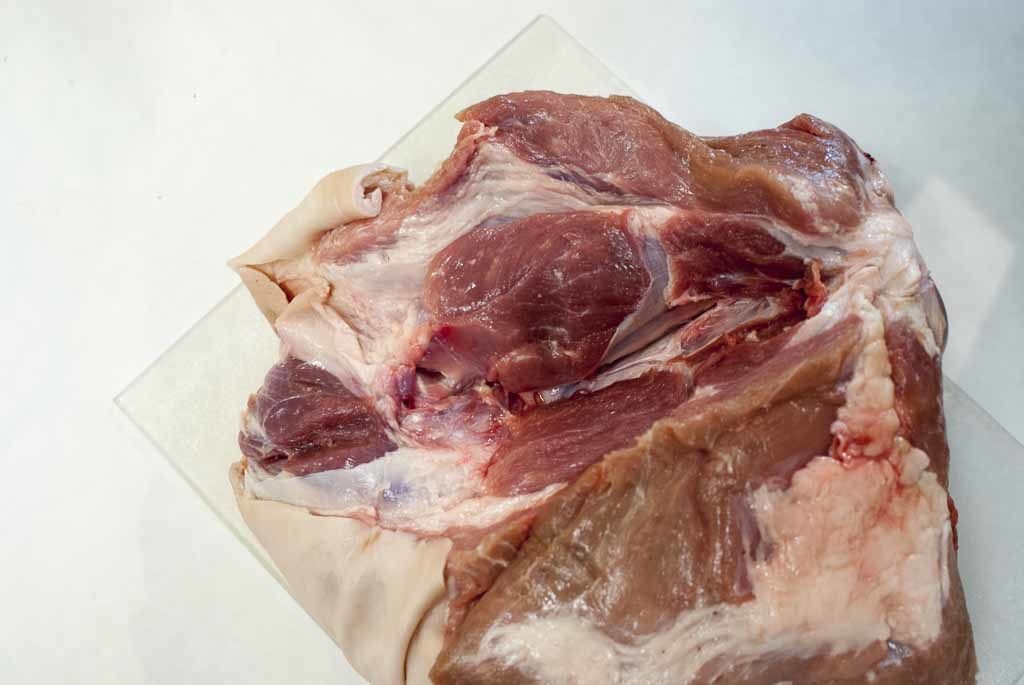
Next, slide the tip of your knife along the length of the bone, working around from top to bottom until you’ve exposed most of the bone.
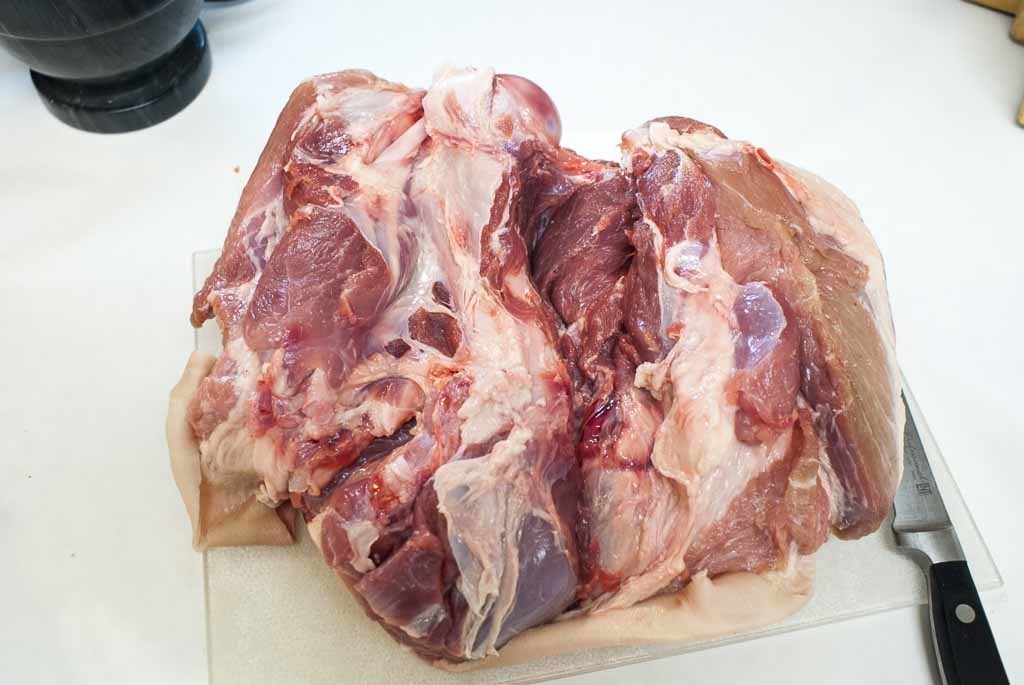
Now, slip the knife under one end and (cutting away from yourself, please!) pop one end of the bone loose. Then just flip your picnic ham around and cut along the bottom to remove the bone. Now set it aside. It’s great for soups, stews, or stock.
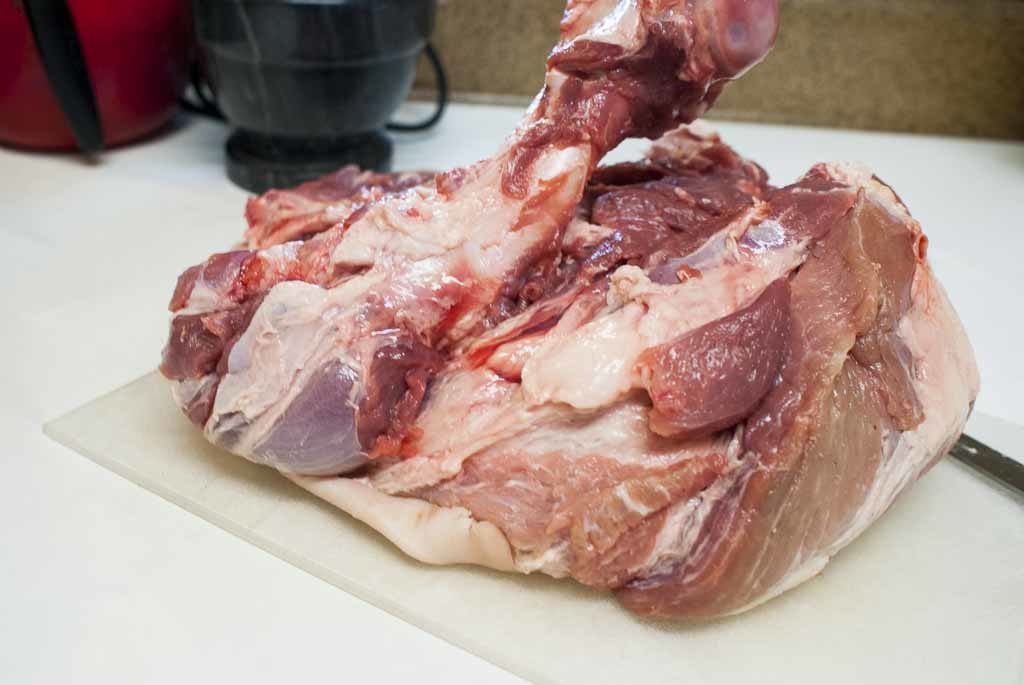
Next, flip over your bone-in shoulder (which is now a bone-out shoulder) and remove the skin. You can fry this up into crispy pork rinds if you are so inclined, but I wasn’t, so this bit doesn’t count towards our 7 meals, and I tossed it.
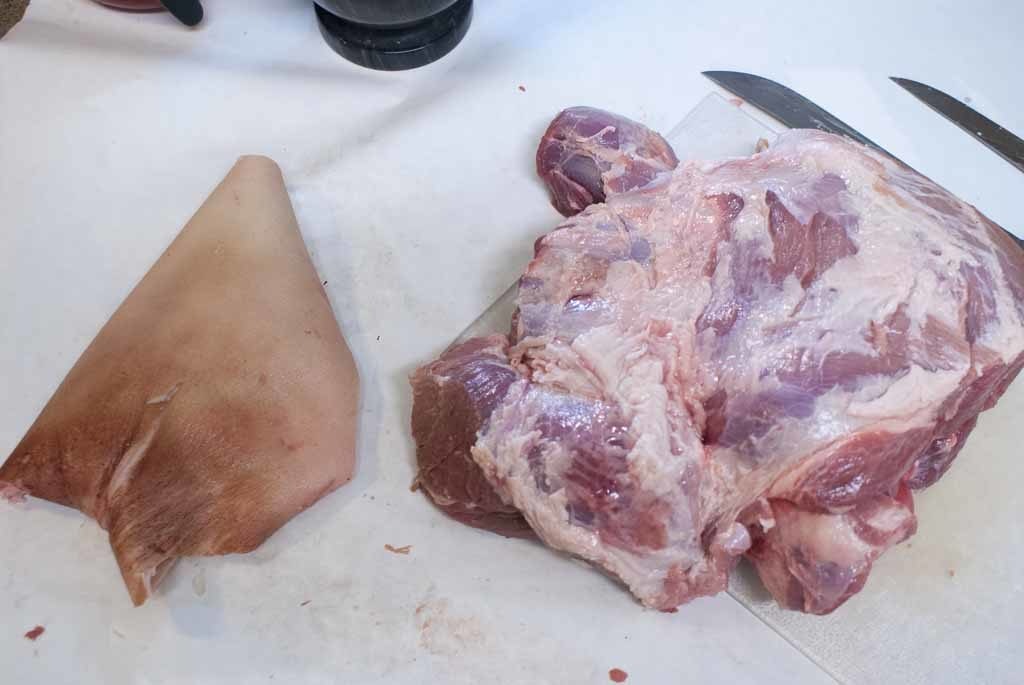
OK. Now we’re getting down to the meat of the matter…
Yeah, I know. I couldn’t help myself…
First off, we need a plan of action here. When breaking down a whole beef brisket or a whole pork loin, you have a fairly consistent piece of meat to work with. This cut is a fairly random shape once the bone is removed.
What I see is a large section of solid muscle that will make some pretty decent chops (Upper left of the picnic ham), so I’ll see what I can get out of that.
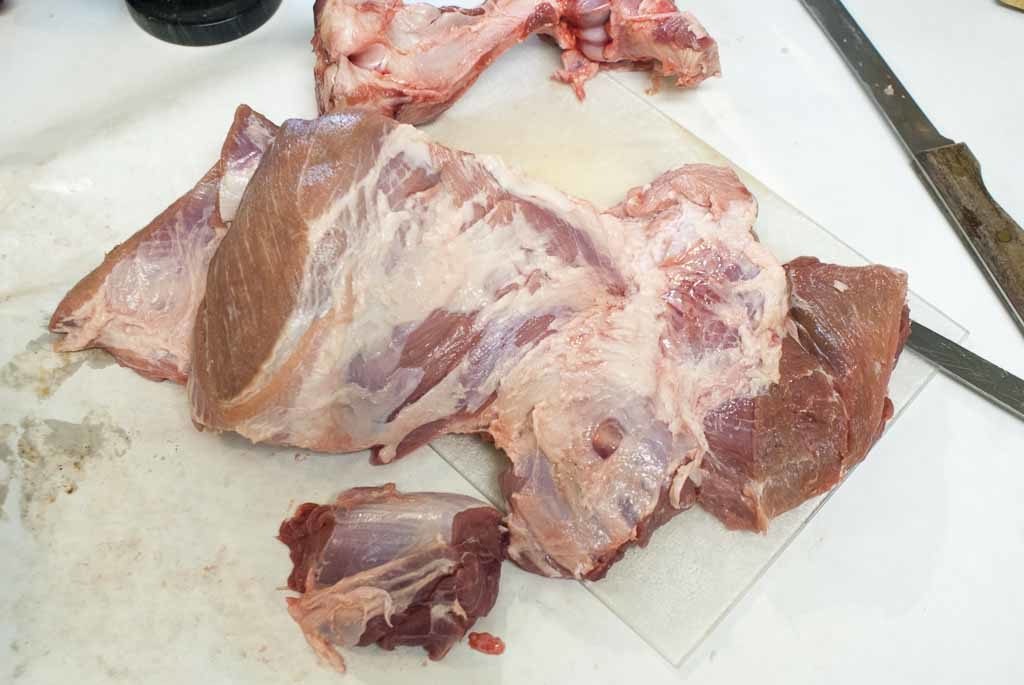
It took a bit of trimming, and you’ll end up with a few scraps, but that’s O.K., we’ll use those for stew meat. This big guy looks big enough to cut down, so I’ll slice it with the grain 3 times to make 4 chops and set those to the side. Meal one done.
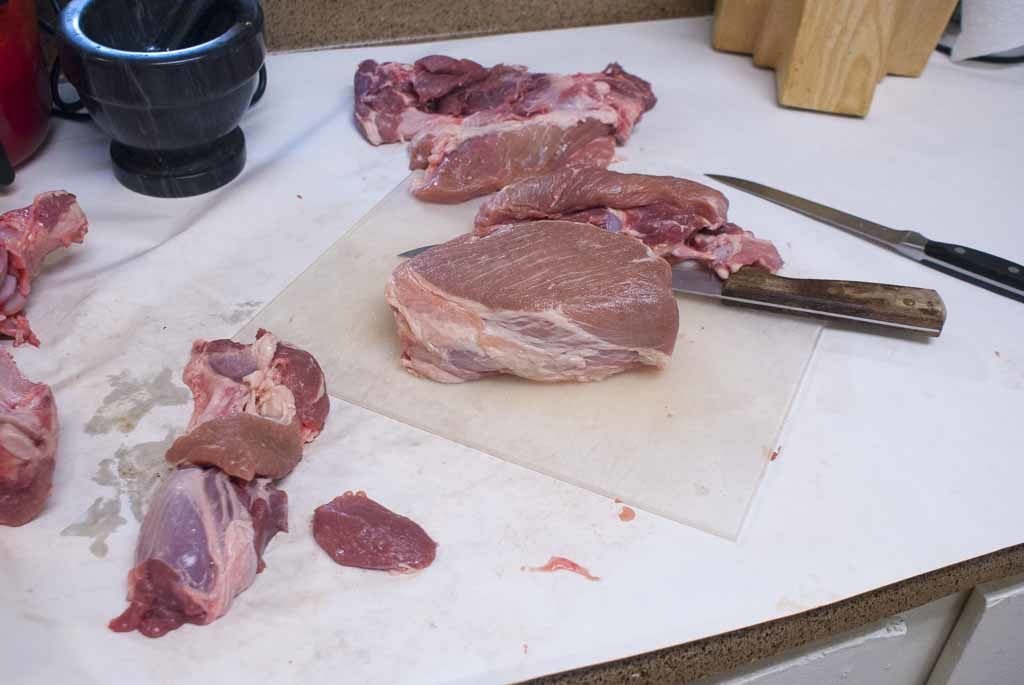
Next, I cut the scraps ant thin pieces into strips or cubes, depending on thickness. The strips can be used for stir fry, and the chunks are great for carnitas or stew.
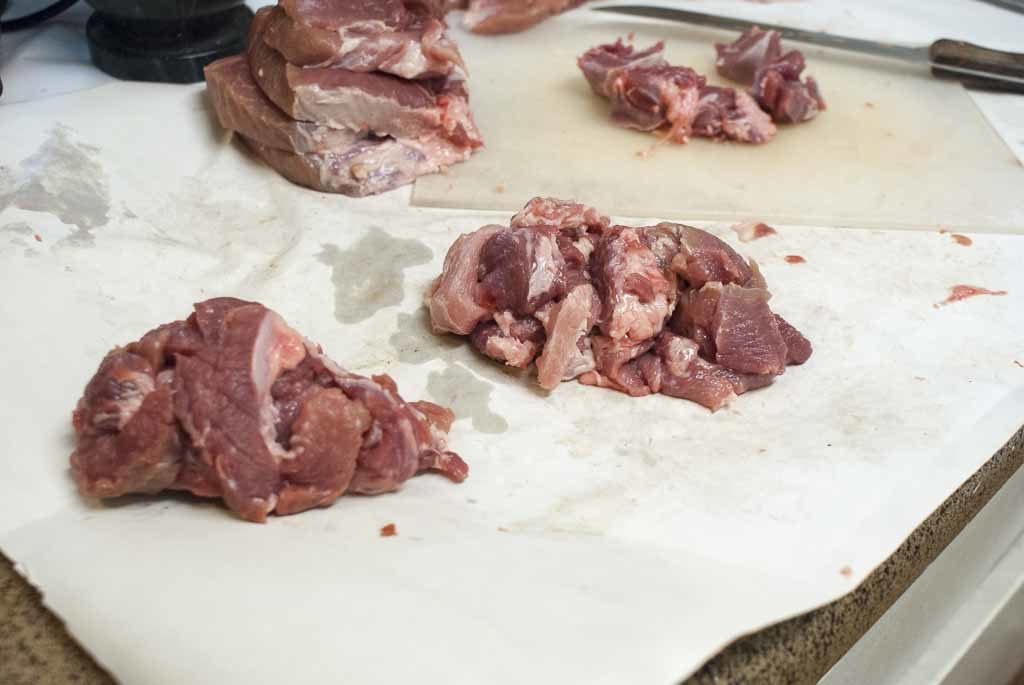
Just keep this up until you’ve cut down all the meat.
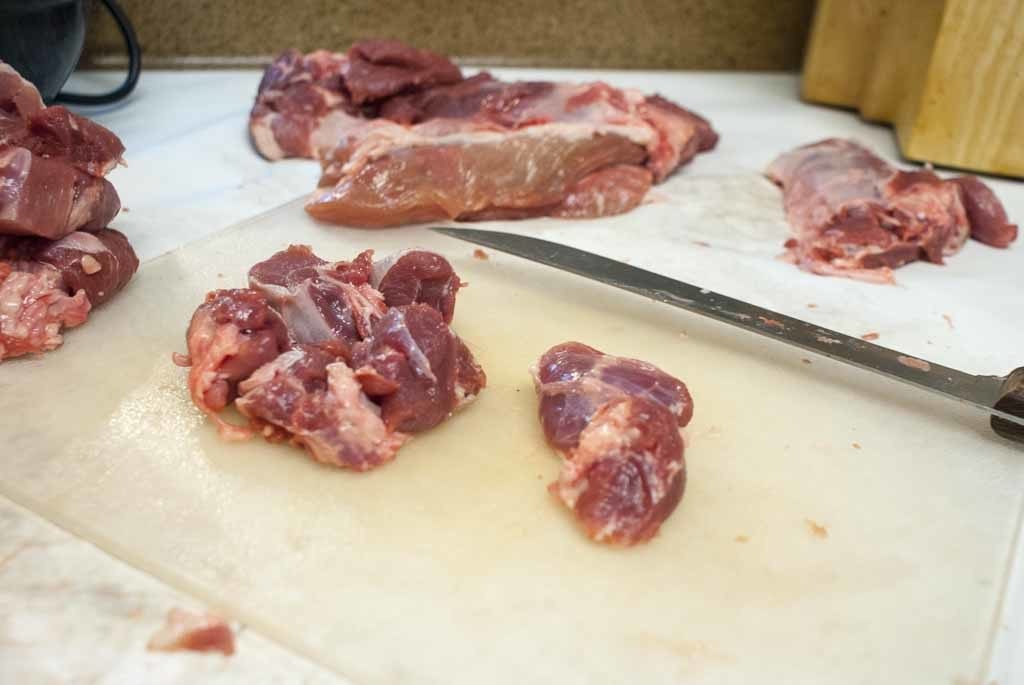
Then separate the pieces into 6 equal portions. You’ll have a little less than a pound each of the strips and cubes, more than enough as part of a main dish in most cases. Plus, you’ve got that lovely bone to toss in for some stock or bone broth.
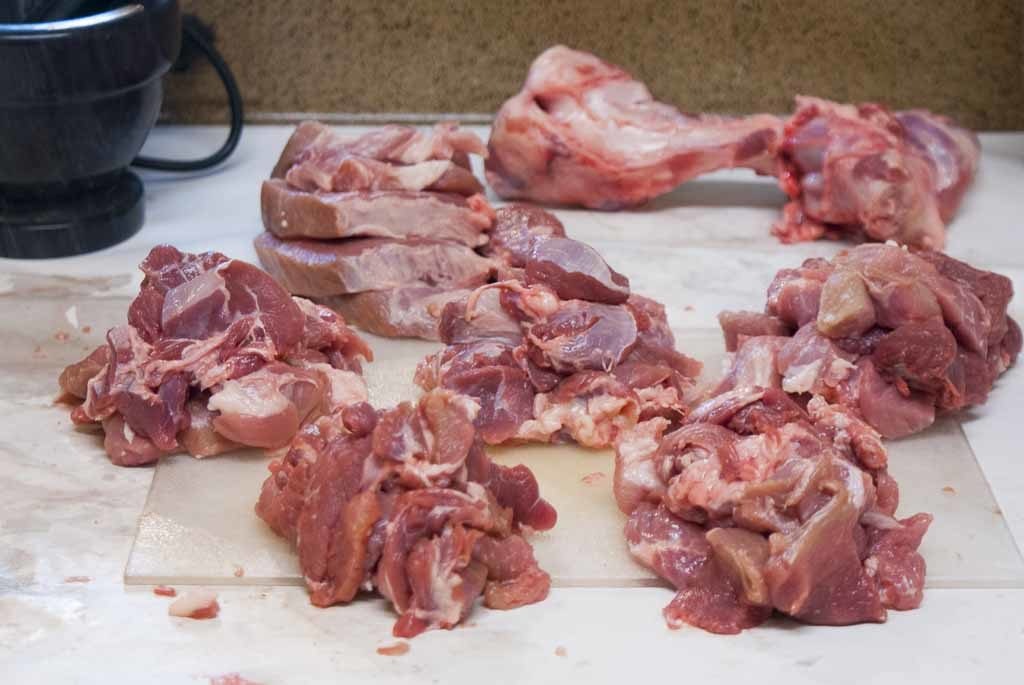
So what did we get out of our single picnic ham?
It takes a little work to break down this cut of meat but let’s be honest, we spent $7.26, and got at least $16.00 to $25.00 worth of proteins out of it. Totally worth the effort in my opinion.
Let’s take a look at what we got and what those cuts can be used for:
- 1 pork bone that’s perfect for making stock, bone broth, or soup.
- 4 pork chops perfect for any kind of braised pork dish you want to make, and probably pretty awesome on the grill as well.
- 3 roughly 1-pound packages of pork stew meat that’s perfect for carnitas, kebabs, soups, stews, or curry.
- 2 roughly 1-pound packages of pork strips, which are perfect for stir fry, soup toppings (ramen, anyone?), or sandwiches.
And there you have it, guys. Seven portions out of one piece of meat, and all at around a dollar each.
Could I have done a better job? Probably. I’m not a butcher, I’m a cook.
But the point of this entire series is this…
You can save a bucket-load of money on meals if you’re willing to do a tiny bit of work.
So go grab a big, scary hunk of meat at the store and find a way to make your wallet a little heavier and your life a little easier. You’ll be glad you did.
Wrapping up:
This series of posts was suggested from readers just like you. If you’d like to help shape what we do here at Uncle Jerry’s Kitchen, consider signing up for the mailing list, (I don’t spam anyone, I promise.) following our Facebook page, or tagging along with us on Pinterest or Instagram. I’d like to make this community a place where people can share their own unique insights on cooking, food, family, and togetherness.
As always,
Food is love. Share and Enjoy.

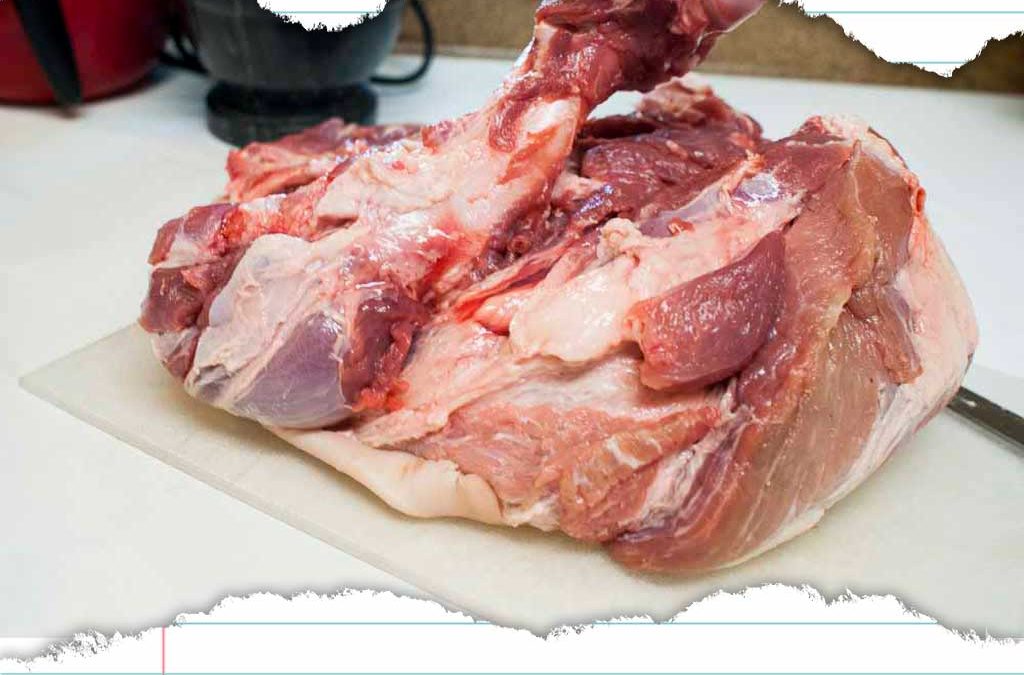
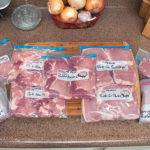

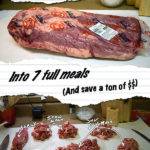
 Thanks for dropping by our kitchen. We're dishing up great food, some laughs and a really great cup of coffee.
Thanks for dropping by our kitchen. We're dishing up great food, some laughs and a really great cup of coffee. 